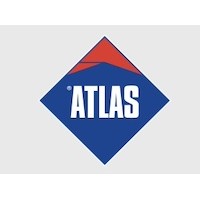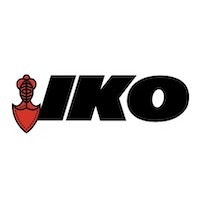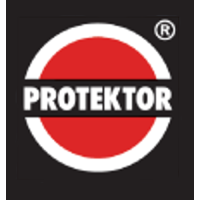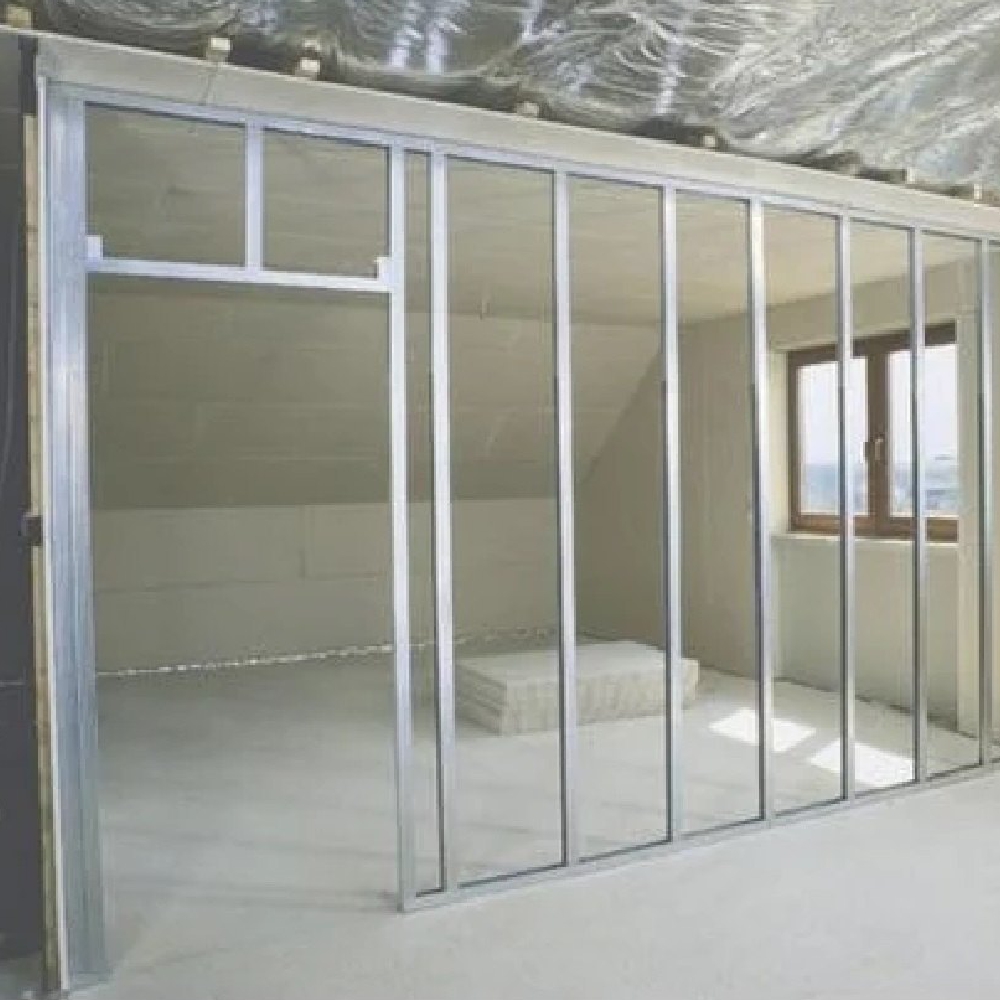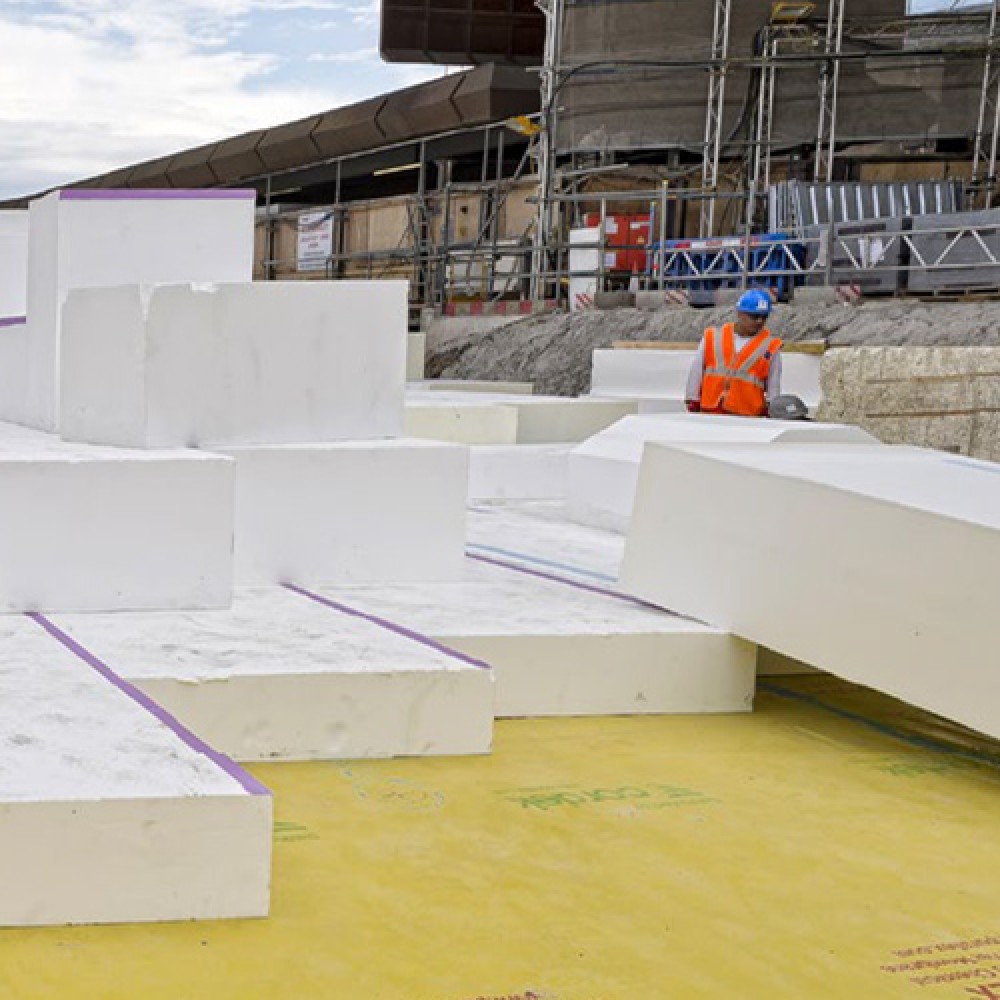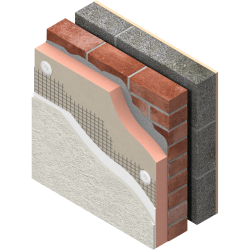Knowledge
Insulation Products and Materials Information
What you should insulate?
Cavity walls
Cavity wall insulation is used to reduce heat loss through a cavity wall by filling the air space with a porous material. During construction of new buildings, cavities are often filled with fibre glass wool, rock wool slabs (batts) or rigid PIR insulation boards placed between the two sides of the wall.
For existing buildings that were not built with insulated cavities, a fibrous material such as cellulose insulation or glass wool is blown into the cavity through suitably drilled holes until it fills the entire wall space. Foam can also be used for this purpose. Cavity wall insulation is an effective way to save energy and money it can give you an annual saving of around £115* So, insulating your cavity walls will help you to heat your home more efficiently. Using less energy reduces carbon dioxide emissions (CO2): one of the biggest causes of climate change. Cavity wall insulation can also help to reduce condensation inside the house.
Solid walls
Solid brick, solid stone, timber frame (pre 1944) and concrete constructed houses can all improve their thermal efficiency by either lining the interior of the external walls with a insulating material like: rigid insulation boards( polyfoam, PIR polystyrene, phenolic), insulation slabs or by rendering the outside walls with a protective insulating layer (polystyrene, polyfoam, phenolic).
What is a solid wall?
- 9” masonry walls and other non-traditional construction types such as single leaf masonry, 9” walls (e.g. thick stone walls)
- Concrete walls, metal or timber panels and some mixed wall types (e.g. Where the ground and first floors are constructed of different materials)
- BRE estimate that around 7% of unfilled cavity wall stock cannot receive CWI.
- High rise flats (at least 6 storeys high) – esp. 1953-1972
Solid wall insulation is an effective way to save energy and money it can give you an annual saving of around £365-385*. It can make your home warm and cosy and can help with condensation problem.
Lofts and ceilings
Average home looses up to 26 per cent of its heat through an un-insulated roof. Making sure the loft is properly insulated will not only keep the house warm but also save you money on heating bills. The estimated savings are between £45 to £150.
Most popular material used for loft insulation is Mineral Wool. The product comes in a form of a roll (see URSA 10 Loft Roll in product categories), its easy to handle and allows quick and effective installation between and across the joists.
Insulating a loft with Mineral Wool Rolls is an ideal DIY job that does not require any special skills and can be carried out without any professional help.
This five step guide will help you effectively install loft insulation.
1. PREPARE
Before commencing any work you mast plan how much insulation you are going to need. Measure whole area of the loft and centres between joists to establish the amount and the width of the insulation required. Measure down the side of the joists to work out required depth of the insulation. Any existing insulation must also be taken into account.
To ensure optimal performance the government recommends installing insulation to a minimum depth of 270m. Don’t forget to measure the size of loft hatch; the loft must also be examined for any ventilation issues. Consider pipes and wires within the space to ensure there are no potential dangers.
2. DRESS FOR THE JOB AND MAKE SURE YOU HAVE ALL THE TOOLS
Lofts can be dusty places therefore wearing protective clothing: hooded overalls, masks and gloves are absolutely necessary to avoid any health and safety risks. Very important is ensuring right tools are to hand. Ensure you have the correct tools to hand – you will need a flat wooden board that you can lay across the joists and kneel on when laying insulation. Don’t forget to make sure you have a sharp utensil such as a large bladed knife available to cut the insulation blanket or loft roll to size if required.
3. START INSULATING
Now you are ready to install the insulation. It is best to start at the corner furthest away from the loft hatch ensuring that the wall plate is covered and work towards the centre of the loft. Ends of the roll must be tucked into the eaves but cannot completely obstruct them to avoid condensation. You will need to lay a base layer to a depth of 100mm between the joists and leave an air gap of at least 5cm at the eaves (between the insulation and the roof felt) to ensure that there is sufficient airflow across the loft space to prevent condensation forming.
4. LAYER UP
Once you’ve laid the initial layer of insulation (100mm), you’ll need to lay an additional layer (170mm) to give a total depth of at least 270mm. This second layer should be laid at right angles at the joists – this is called ‘cross layering’ and really makes a difference to the overall thermal performance. At this stage take extra care, working across the loft, it’s also important to remember that you will be covering joists, so be careful not to lose your footing as you go!
5. REVIEW YOUR WORK
Once the insulation is laid stand back and critique your job. Make sure that electric cables are lifted up and placed on top of the insulation and that recessed lights have a minimum 75mm clear airspace all around them to prevent them from overheating. If you have a water tank in the loft make sure that there isn’t any insulation underneath it – instead wrap around an insulated tank jacket around it.
Floors and foundations
There are two main ways of insulating floor: insulating from above or insulating from below.
When insulating from above you would be able to lift any carpeting or tiling as well as the floorboards and fill between the joists with insulation material. You may wish to staple some form of netting between the joists to support the insulating material or you could nail batons to the joists so that these support the panels of insulation material that lie on top. Alternatively, rather than filling the gaps between the joists with solid insulate you could simply roll a foiled quilt, insulate across the joists, whilst pushing it down between the gaps in the joists (no more than 2 inches) and staple to the inside of each of the joists to support the quilt in place.
Insulating a floor from below is an even easier proposition (although a less likely option) which would simply pushing the insulation between the joists and using a form of mesh or netting which is connected underneath to support the insulation material in place.
*This is estimated figure based on insulating a gas-heated, semi-detached home with three bedrooms
Types of insulating materials
PIR - Polyisocyanurate and PUR - Polyurethane
Polyurethane (PUR) is produced by blowing a non CFC (chlorofluorocarbon) gas (usually Hydro Carbon Pentane) into urethane resin to produce a free foaming insulant (the gas used helps to improve the thermal performance of the product, but gradually escapes into the atmosphere over time). For this reason (and to stabilise the foam into boards), polyurethane and polyisocyanurate (PUR) boards are usually faced with aluminium foil. Polyisocyanurate is similar to polyurethane but usually contains long strand glass fibres within the PIR foam core which is formulated to give off less dense smoke in a fire.
PIR I PUR are mainly used as a flat roof insulation, pitched roof insulation, partial fill cavity wall insulation, domestic under-floor insulation, foamed composite panels. PIR I PUR are Suitable for temperatures up to 75°C, usually faced with aluminium foil or glass tissue.
Phenolic insulation is a type of rigid insulation material known for its excellent thermal performance and fire resistance. It is made from phenolic foam, which has a closed-cell structure. This structure helps to provide high levels of thermal efficiency, making it one of the most effective insulation materials available.
Phenolic insulation has a low thermal conductivity, meaning it is very effective at reducing heat transfer. This makes it ideal for use in buildings where maintaining a stable temperature is important. It has excellent fire performance, often achieving high fire ratings. This makes it a safe choice for various applications, including walls, roofs, and ductwork. The closed-cell structure also makes phenolic insulation resistant to moisture, which helps to prevent issues like mould and damp. Despite its rigidity, phenolic insulation is lightweight, making it easier to handle and install.
Phenolic insulation is commonly used in both residential and commercial buildings, particularly in areas where space is limited but high thermal performance is required
Polystyrene insulation is a type of rigid foam insulation which is commonly used in residential and commercial settings. It has an exceptional ability to insulate against noise and extreme temperatures. It is also waterproof and long-lasting. These qualities combine to make polystyrene insulation an exceptionally useful product.
Two types of polystyrene are used for insulation: expanded and extruded polystyrene. Expanded polystyrene, also called bead board, has a lower density that the extruded kind, and is less expensive, but also has slightly less insulating power. This is because of its coarse cells and the fact that they contain only air. Extruded polystyrene insulation has finer cells or beads, and contains a mixture of air and refrigerant gas, making it a better insulator.
Extruded polystyrene (XPS) is made by mixing polystyrene pellets with various ingredients to liquify them. A blowing agent is then injected into the mixture, to form gas bubbles. Next, the foaming liquid is forced through a shaping die. When cooled, it produces a closed-cell foam that is rigid and moisture resistant. XPS is mainly used as ground floor insulation, heavy duty floor insulation and flat roofs insulation. Extruded polystyrene is suitable for temperatures up to 75°C, it is very rigid and can be cut various component shapes and thicknesses. Typically available in 2.4m x 1.2m or 2.4m x 0.6m sheets.
These consist of multiple sheets of aluminised polyester separated by thin sheets of polyethylene foam. To be effective, the outer faces must face an unventilated cavity in the construction. Multifoils are mainly used for pitched roofs in hot climates, to stop heat build-up and it is very effective in heat retention in winter.
Glass mineral wool is made from sand and recycled glass, limestone and soda ash.. The glass is spun to form millions of fine fibres. A resin is used to bind the long fibres together to form a mat of material giving good tear strength. The density of the product determines whether the insulation is a lightweight quilt supplied in rolls, a flexible slab or a rigid slab, and it’s thermal insulation value. Glass wool is mainly used as a loft insulation, cavity wall insulation, sound insulation within partitions and floors. Glass wool is suitable for temperatures up to 230°C
Rock mineral wool is made mainly from volcanic rock, typically basalt and/or dolomite. An increasing proportion is now recycled material from slag, a waste product from blast furnaces. The materials are melted and then spun into fine fibres. A resin is used to bind the fibres together to form a mat of insulation. Rock mineral wool is mainly used as a thermal insulation of flat roofs, rainscreen facades and external wall insulation, Fire protection (including smoke and fire barriers) high temperature applications, sound insulation for floors and walls. Rock mineral wool is suitable for temperatures up to 850°C and is denser than glass mineral wool.
Natural wool insulation, often made from sheep’s wool, is a sustainable and eco-friendly option for insulating buildings. Wool has excellent thermal properties, helping to keep buildings warm in the winter and cool in the summer. Wool insulation is breathable, which helps to regulate humidity and prevent condensation issues. It can absorb and release moisture without losing its insulating properties, making it effective in damp conditions. Wool is a renewable resource, and using it for insulation supports sustainable farming practices. Wool is naturally fire-resistant, adding an extra layer of safety to buildings. It also provides good sound insulation, reducing noise levels within buildings.
Natural wool insulation is often used in walls, roofs, and floors, and it can be a great choice for those looking to reduce their environmental impact while maintaining high performance in their insulation
Thermal Insulation
There are several types of insulation for the home and commercial buildings.
Poorly insulated buildings are costly to keep comfortable in the summer or winter months. Proper insulation means cost savings, environmental health, and personal health. Proper insulation reduces damage to the structure of the house, retains property value, and reduces mould and mildew problems. Whether you are planning on selling the home or keeping the home, proper insulation is an investment, which will normally profit any household.
Thermal Insulation for the home reduces the transfer of heat between the outside world and the inside of your home. This keeps the cool air in, during the summer months, and the warm air in during winter months.
Insulation in good condition also creates a vapor barrier, which keeps moisture from the inside, where it can damage wood, walls and carpeting.
How to find Insulation Problem Areas
In the Winter months, if interior walls are cold to the touch, or the floor are cold, this could be a sign that these areas are lacking in proper insulation. There could be bare areas or areas where the insulation has deteriorated to the point where it is no longer functioning as it should.
Uneven heating levels in a building or the feeling of a “draft” in a room are also signs that the insulation has become worn or deteriorated.
Another sign, which is not associated with poor insulation very often – but is normally a direct result, is the growth of mould on the walls.
In the summer months, if rooms are uncomfortably hot inside, or the air conditioning unit doesn’t feel like it is working no matter how much you run it, then this could be the direct result of poor insulation.
Finding mould growing in the basement can be directly related to the condition of your home insulation.
Home Insulation in the Attic
Insulating the attic areas is the most cost effective project area. The first thing to do is to make sure that the interior roof of the house, leading to the attic, is moisture tight, so that moisture is not seeping into the cold attic space and condensing. Condensation can lead to water damage of your wood structures, and the deterioration of the insulation layer itself. Make sure that the air barrier is tight. Check ceiling light fixtures, and the tops of the interior walls. Especially inspect the places where plumbing pipes and ventilation shafts come through the ceiling.
Home Insulation in the Basement
Unlike the rest of the house, the basement walls must be able to accommodate moister passage between the inside and outside of the barrier. Thus, insulating the interior is not very effective. The preferred method of insulation is to apply insulation to the exterior of the walls, using a rigid type, designed for below-grade installations. For example, common types of insulation for this type of installation could be rigid fibreglass or extruded polystyrene.
Some Final Thoughts
Home insulation is one of the best investments that a home owner can make for retaining property value. Adding or retrofitting poor insulation now will likely pay for itself in only a few years, by reducing heating and cooling costs (not to mention possible structural damage from moisture and mould).
If you are building a new home, it pays to make sure that it is well insulated now.
Sound pollution is commonly recognised as an issue in all types of building construction. Every homeowner likes to enjoy quiet atmosphere of his house. However, unless special care is taken by the builder to provide sufficient acoustic insulation for the walls, floors and ceilings, the homeowner is likely to hear allot of unwanted sounds like snores in the adjacent room or movie playing on the home theatre down the hall. Soundproofing systems play even more important role in work environments. Even a small headache caused by uncontrolled level of noise can have a negative impact on the work efficiency. Sufficient acoustic insulation should be used in all construction settings to provide higher living comfort for homeowners, maintain quiet atmosphere at work to reduce level of stress and to improve general wellbeing.
Sound waves are reflected when they hit a hard surface. Acoustic insulation is made from porous materials of varying density and composition. Sound energy is converted into heat within the open pores of the acoustic insulation to absorb part of the reflected sound. In order to maintain the best absorption values the air channels should be open to the surface so that sound waves can propagate into the material. Pores in acoustic insulation should not be sealed by paint or any other coverings. Any protective shielding for the acoustic insulation should generally be perforated to maintain soundproofing values. Acoustic insulation should also be kept dry during storage to maintain its soundproofing capabilities.
Sound-dampening acoustic batt insulation installed into partitions during construction is a very good choice for reducing sound pollution. It is highly recommended that the insulation fits snugly into place, and that it fills the wall cavity. Acoustic insulation should be carefully cut to fit around electrical boxes and pipes eliminating any gaps or holes that could easily allow sound to flow through.
The ability of an acoustic insulation material to absorb sound is usually provided in the form of an absorption coefficient. The absorption coefficient is defined as the ratio of sound energy absorbed by a given surface, to the sound energy incident upon that surface. The absorption coefficient can vary from 0 to 1. If for example the absorption coefficient is 0.9, then 90% if the sound energy will be absorbed by that material. Most porous absorbers are more efficient at high frequencies, while improving the materials thickness, or mass, can increase low frequency absorption.
Sound Transmission Class (STC) is a scale used to rate partitions like walls or floors on how well they reduce sound or noise levels. The rating directly reflects the number of decibels (dB) a partition reduces. Normal conversation is about 60 dB. A standard interior wall with 3/8" gypsum board has an STC of about 35. This means if someone were speaking at normal level in the next room, you would hear about 25 dB of noise, or just over a whisper.
Insulationshop.co offers wide range of acoustic insulation products from manufacturers: URSA and KNAUF suitable for soundproofing all kinds of partitions. For more information about particular product please see product description.
Fire protection in construction
Fire resistance is defined as the property of a building assembly to withstand fire, or give protection from it. Included in the definition of fire resistance are two issues. The first issue is the ability of a building assembly to maintain its structural integrity and stability despite exposure to fire. Secondly, for some assemblies such as walls and floor-ceiling assemblies, fire resistance also involves serving as a barrier to fire spread. Fire resistance is commonly assessed by subjecting a prototype assembly to a standard test. Results from the test are reported in terms of a fire resistance rating, in units of hours, based on the time duration of the test that the building assembly continues to satisfy the acceptance criteria in the test.
Fire resistance rating requirements for different building components are specified in building codes. These ratings depend on the type of occupancy, number of stories, and floor area.
The fire performance of a structural member depends on the thermal and mechanical properties of the materials of which the building component is composed. As a result of the increase in temperature caused by the fire exposure, the strength of a steel decreases along with its ability to resist deformation. In addition, deformations and other property changes occur in the materials under prolonged exposures. Likewise, concrete is affected by exposure to fire and loses strength and stiffness with increasing temperature.
Structural steel and fire protection
Beams and trusses may react differently to severe fire exposures, depending on the end conditions and fabrication. Unconnected members may collapse when the stresses from applied loads exceed the available strength for beams and trusses.
Steel most often used in building design and construction are either hot-rolled or cold-drawn. Their strength depends mainly on their carbon content, though some structural steel derive a portion of their strength from a process of heat treatment known as quenching and tempering.
Given the significant reduction in the mechanical properties of steel at temperatures on the order of 540°C, isolated and unprotected steel members subjected to the standard test heating environment are only able to maintain their structural integrity for 10 to 20 minutes, depending on the mass and size of the structural member. Consequently, measures are taken to protect load bearing, steel structural members where the members are part of fire resistant assemblies. A variety of methods are available to limit the temperature rise of steel structural members, including the insulation method and the capacitive method.
Types of insulation
The insulation method consists of attaching insulating spray-applied materials, board materials, or blankets to the external surface of the steel member. A variety of insulating materials have been used following this method of protection, including mineral fibre or cementation spray-applied materials, gypsum wallboard, asbestos, ceramic tiles and masonry materials.
Insulation also may be used to form a membrane around the structural member, in which case a fire resistive barrier is placed between a potential fire source and the steel member. An example of membrane protection is a suspended ceiling positioned below open web steel joints.
Fire rated (Type X) Gypsum boards
Plaster, found in every gypsum board, binds about 20% of crystalline water, which in a panel thickness of 12.5 mm is about 2 liters of water per square meter. When gypsum drywall is exposed to fire, the water is slowly released as steam, effectively retarding heat transmission. Fire rated gypsum drywall is more fire resistant because it contains glass fibre reinforcement and other additives within its specially formulated gypsum core to help it hold up longer to a fire exposure.
Gypsum board with glass fibre in the gypsum core provide better fire resistance than gypsum board without glass fibre. This is due to the fact that the lighter the gypsum board is, the more easily it cracks, and the more cracks it has, the more susceptible it is to disintegration in a fire. The glass fibre in the core helps keep the gypsum board together. When there is more than one layer of gypsum board on each side of the assembly, the presence of glass fibre in the gypsum core has less effect.
In homes, use of fire rated drywall is required by building codes on interior and exterior walls near furnaces and utility rooms. Fire rated drywall can also be put up in a basement or other places where a wood stove might be used or around the opening of a fireplace. In commercial buildings, Type X gypsum boards are installed on walls and ceilings to comply with building codes for fire partitions and assemblies.
Calcium Silicate is a kind of high efficient energy-saving material with temperature limited 1100 °C. It is an asbestos free insulating material reinforced with inorganic fibre designed to provide excellent thermal and heat resistance insulation for a wide range of industrial heat insulation requirements. They are recommended as thermal insulations of equipment in power station, steel mill and petrochemical industries as well as other various fields. It can also be specified to use in furnace as backing material of refractory bricks.
Calcium silicate is a safe substitute to health threatening asbestos and is very environmentally friendly. One disadvantage of calcium silicate is that it is easily damaged by water hence certain storage requirements should be maintained to keep insulation boards protected from moisture and prevent any damage to the product.
In addition, various decorative processes can be made for the calcium silicate board surface, such as coating materials or all kinds of adhesive.
The rock wool has an extremely high melting point of over 1000oC. In the event of fire they will emit negligible quantities of smoke and fumes. The heat emission from the products is insignificant. Rockwool products are rated non combustible and It has an ignition loss of less than 1%. Because rock wool insulation is naturally non-combustible, it remains non-combustible for it’s entire life of use while also offering protection against damaging moisture that may ruin it’s fibre's.
The fire resistance of stone wool makes it a common building material when passive fire protection is required, often used in stud cavities in drywall assemblies and as packing
materials in fire stops. Rock wool is unattractive to rodents but will provide a structure for bacterial growth if allowed to become wet. Other uses are in resin bonded panels, growth medium in hydroponics, filler in compounds for gaskets, brake pads, in plastics in the automotive industry and as a filtering medium.
Phenolic rigid panels are hard panels for thermal insulation made of phenolic (phenol-formaldehyde), a synthetic polymer. The material is fire-resistant and mainly inert, but emits traces of formaldehyde.
Phenolic insulation board is manufactured by a process in which a plastic foam forms an insulating core between two flexible facing layers. It has a high closed cell content and fine cell structure.
Rigid phenolic insulation has better fire properties than other rigid foam plastic boards but is combustible and may give off toxic black smoke in a fire. Phenolic foams which have very low thermal conductivities are used as alternatives to PUR or PIR foams where a self extinguishing, low smoke emission, material is required. It can be used for partial fill cavity wall insulation, pitched roof insulation and insulated dry lining.
Building Regulations
![]() Part L1a - Conservation of fuel and power (including thermal insulation) - new dwellings
Part L1a - Conservation of fuel and power (including thermal insulation) - new dwellings
![]() Part L1b - Conservation of fuel and power (including thermal insulation) - existing dwellings
Part L1b - Conservation of fuel and power (including thermal insulation) - existing dwellings






